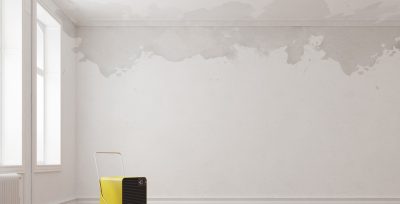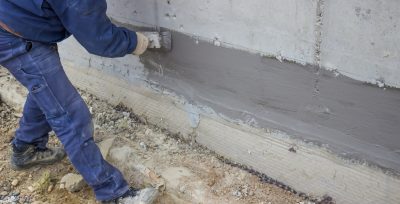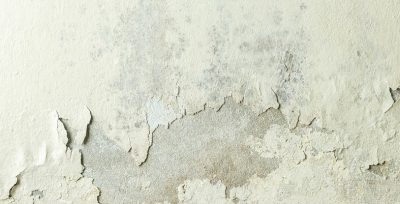Dry rot can be a big problem, and it can cause serious issues in your home, especially if it’s been there for a long time before being detected. It’s most likely to form in damp places that are dark, out of sight and reach. Dry rot is commonly caused by leaks which occur in isolated areas around your house. It spreads very quickly which means it will likely be in an advanced stage by the time it’s detected. At this point, repairs can be really costly and cause a headache.
Wood decay can be caused by other wood-destroying fungi and not just dry rot. In order to tackle the problem, properly discovering the real reason for wood decay is really important. Dry rot, in particular, tends to travel through all kinds of materials other than wood, which allows it to spread very quickly throughout the property. In many cases when treating dry rot outbreaks, there are additional measures that have to be taken, such as masonry sterilization.
What are the most common signs of Dry Rot?
Dry Rot Smell
Dry rot makes the air smell damp, musty and mushroomy. That is one of the first signs that you will notice, and it’s a clear indicator that there is dry rot developing and spreading somewhere within the house.
Dry Rot Treatment and Services in London
Wood Damage
Another sign of dry rot is a change in the state of wood objects in your home. For example, you may notice your floors, door frames and skirting boards look and feel dry and brittle. When affected by dry rot the wood crumbles in your palms when you touch it, and it also has a darker colour. One of the most obvious symptoms of dry rot affected wood is “cuboidal cracking” – a state that causes the wood to break up into 50mm wide cubes. Hyphae, a white fungal growth, is also present in damaged wood. It looks like cobwebs, and if you notice them, you can be certain you have dry rot issues.
In addition to the dryness and crumbliness, you may notice other types of visual damage as a result of the lack of moisture, such as cuboidal shaped cracks, and warped and shrunken appearance. Floors will also look and feel dry and spongy, a clear indication that it’s starting to rot.
Strands
Grey strands appearing on the wood are another sign of dry rot issues. At first look, they are very similar to cobwebs. These strands show the wood’s search for moisture and the path in which dry rot spreads.
Mycelium
The penultimate stage of the life cycle of dry rot is mycelium. White mycelium is not hard to recognize, but it is hard to spot. It has the appearance of cotton wall balls, which makes it easy to discern. The tricky part is to know where to look for it, since it develops in dark, damp places with no air ventilation, most commonly in small empty spaces under the floor.
Fruiting Bodies
The last stage of dry rot is the fruiting body. It can be recognized very easily thanks to the mushroomy appearance. It has fleshy pancake-resembling growths with an orange-ochre top and characteristic wide pores.
Spore Dust
The presence of spore dust is a result of the fruiting body stage, and it’s a clear indicator of dry rot in its most advanced stage. Spore dust means the fruiting body has exploded and it is looking for a new source of moisture and continues to spread on new surfaces. It’s distinctive rusty, red-brown, colour is hard to miss.
We strongly advise for an inspection to be performed should you notice any of the abovementioned symptoms. Dry rot is a serious problem, and if detected there are appropriate steps and measures that must be taken for it to be treated properly. We can have a member of our staff sent over to your home to inspect and identify possible dry rot issues and recommend further action.
Detecting dry rot early and successfully is only half the problem. When detected in its early stages it’s much easier to stop and prevent from spreading, saving you a fortune in the process. It’s very important to check dark, damp and warm places with no air circulations. Those are the places where dry rot is most likely to occur and start spreading, as well as sub-floors and roofs in lofts. Older homes are more likely to be affected by dry rot than modern homes, however, it can happen in newer homes too.
Your home may be recently built but that doesn’t mean you shouldn’t be on the lookout for possible dry rot issues. If you think you have noticed any of the symptoms discussed here, no matter if your home is new or old, call a professional for an inspection right away. The sooner it’s detected, the easier it will be to eliminate and make sure it never comes back again.
How to Get Help for Dry Rot
Dry rot can spread really quickly, which is why it is important to spot it early and take action accordingly. It’s better to leave it to a professional, and not take any action on your own since it’s a serious problem and if not treated properly it can cause a lot of problems, and it can get really costly. It’s essential to treat affected wood areas, replace parts that need replacing and accurately identifying the source of moisture that leads to dry rot in the first place.
Dry rot may cause significant structural damage to your home. Contact our technical department without hesitation on 020 7971 1329 and we will happily make an appointment for you to be visited by a professional for an inspection.
We can help you deal with your dry rot problem safely and effectively so that you don’t have to fear for your home’s structural integrity and feel safe in it, certain that it’s dry rot free.


